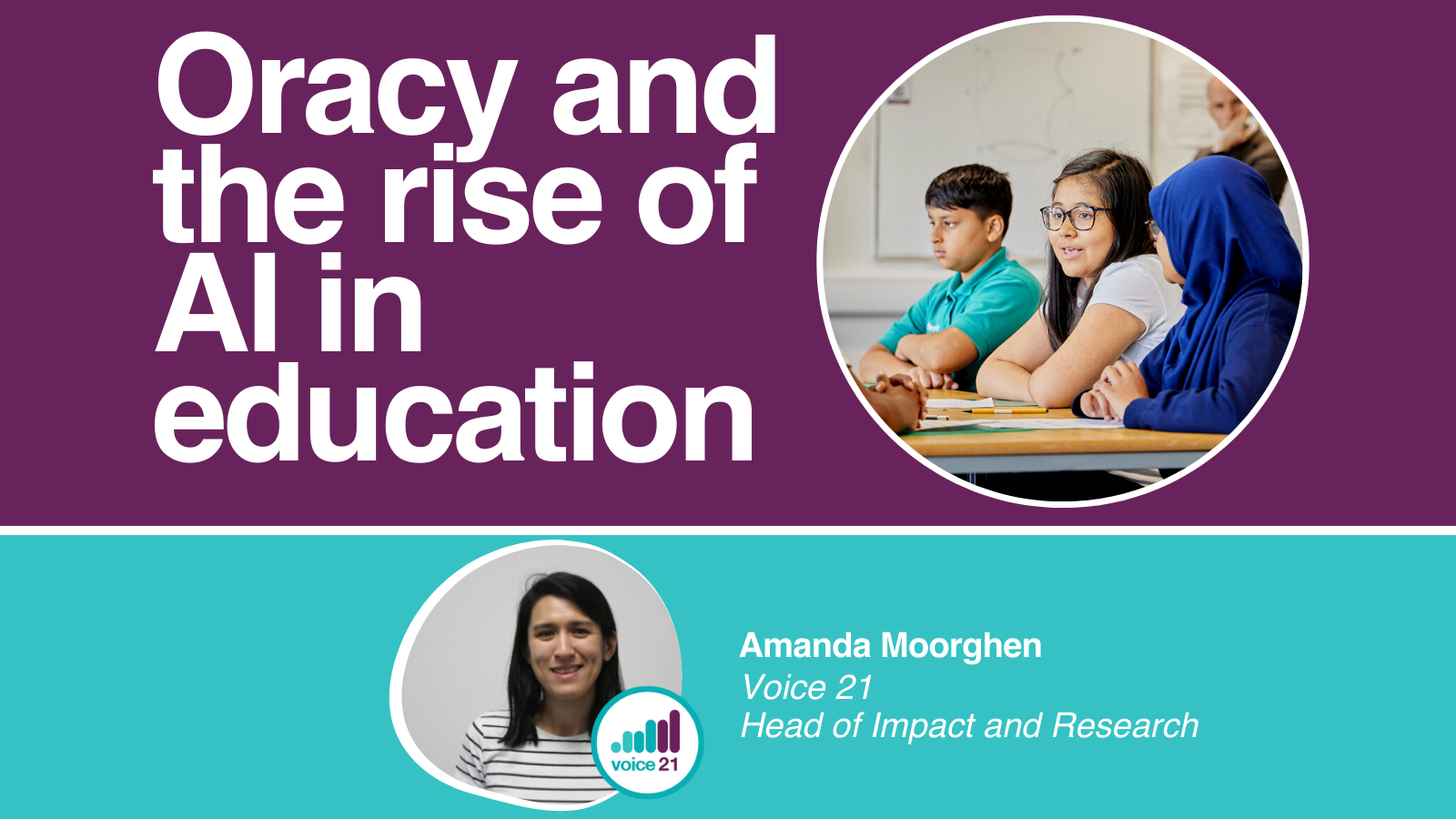
Education has always been responsive to technology – whether the question is the best way to deploy current tech to help students learn, or how to prepare students for their brave new tech-enabled futures, it’s clear technological advancements can’t be ignored.
The most recent splash has been made by ChatGPT, an online chatbot that can help students by re-phrasing or summarising information, answering questions (to varying degrees of accuracy and usefulness), and even writing whole essays and assignments.
The arrival of ChatGPT raises two related questions: first, can we trust that students’ written coursework is their own, or does ChatGPT make cheating too easy? Second, are exam-based qualifications even more out of date – do they test the skills students will need in the workplace of the future?
In response, many have turned to oral assessments – students presenting and being questioned on their learning, like an interview or a viva. The benefits are clear – given the high demand for strong communication skills from employers (recent NFER research predicts communication to be the #1 in demand skill in 2035), an exam system that uses this mode of assessment would have strong appeal in terms of the validity or authenticity of what is being assessed. It would also be safe from interference from online chat bots – whilst ChatGPT could have a go at writing your coursework, it can’t turn up to a viva or interview!
However, increasing the ‘stakes’ on oral modes of assessment comes with two significant risks. First, we know that not all students currently receive the high-quality oracy education to which we at Voice 21 believe they are entitled. Less than a quarter of secondary teachers and less than half of primary teachers report being confident in their understanding of the ‘spoken language’ requirements outlined in the National Curriculum. This risks introducing an unfair barrier for students seeking to get the best grades in their subject areas, as they risk being inadvertently tested on a communication medium that they have not received explicit instruction in.
Second, we know that there is substantial disagreement around the UK about what ‘good’ looks like in spoken communication. Unlike reading and writing, which have long been argued over, debated and eventually codified in our education system, oracy is a relatively young domain. Sociolinguists argue that in some parts of the education system, “speaking well” is defined and enforced in a way that stigmatises and further marginalises students from backgrounds that are already stigmatised or marginalised (on e.g. grounds of race and/or class). The Sutton Trust recently published research that finds that Accentism – bias towards or against those speaking with particular accents – is common in our universities and workplaces. High-stakes assessment using an oral mode would have to be designed and defined in a way that evades, rather than fed, these biases.
How can we make best use of ChatGPT in the classroom, ensuring that students gain an understanding of this technology’s strengths, weaknesses (and ethical pitfalls) before they are asked to deploy it, perhaps in the workplace? Can it be used to teach students the critical literacy, thinking and oracy skills they will need to thrive in the world that language bots will come to shape?
The technology may be new, but examples are already emerging of educators putting it to use. Here, educators from a writing tutor to a bioscience professor are encouraging students to make use of ChatGPT. It can be given a prompt (perhaps an essay question) and will happily generate an essay. Rather than that being the end of it, students can then be encouraged to discuss and annotate these first thoughts. Perhaps they spot some factual inaccuracies to research further. Perhaps it raises some interesting initial ideas or themes that are worthy of further contemplation. Perhaps there is a need to edit and redraft the chat bot’s work, to give it an underlying logic and argument.
This sort of structured, educator-mediated discussion of ChatGPT’s output can have a number of benefits. Students will learn much-valued editing and drafting skills; how to think critically about a chat bot’s output – gold dust in a media landscape that increasingly risks bot-driven ‘fake news’ adding to existing woes; and how to work with language bots – how to prompt them, and what sort of outputs you can expect. Moreover, some have found that working with ChatGPT as a starting point can help students by leapfrogging them over the barrier of starting with a ‘blank page’, instead allowing them to focus on the core purpose of the assignment.
This sort of learning requires the use of both oral and written communication. Strong oracy skills are the bedrock for the dialogue students need to have with educators and with each other – learning through talk enables students to think critically by applying their understanding; testing out new ideas; challenging each other, themselves (and ChatGPT!); and integrating what they already know and believe with what they’re learning and exploring. In turn, this supports stronger written communication. Students sit down to write with more of the building blocks in place – having already explored and deepened their thinking, and built confidence in what they have to say.
ChatGPT is here to stay. It encourages us to refocus our attention on the uniquely human talents and values that we will need to live with it – all of which require learning to and through talk. Oracy is here to stay too.
© 2024 Voice 21. Voice 21 is a registered charity in England and Wales. Charity number 1152672 | Company no. 08165798